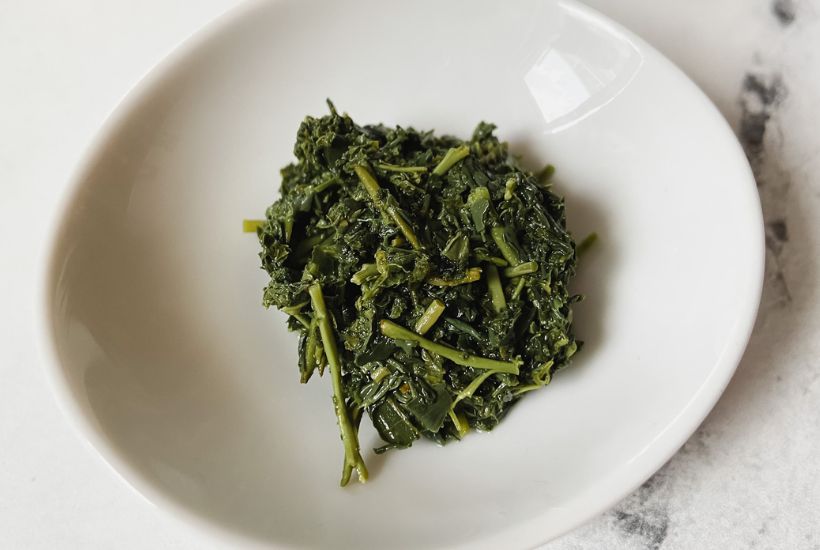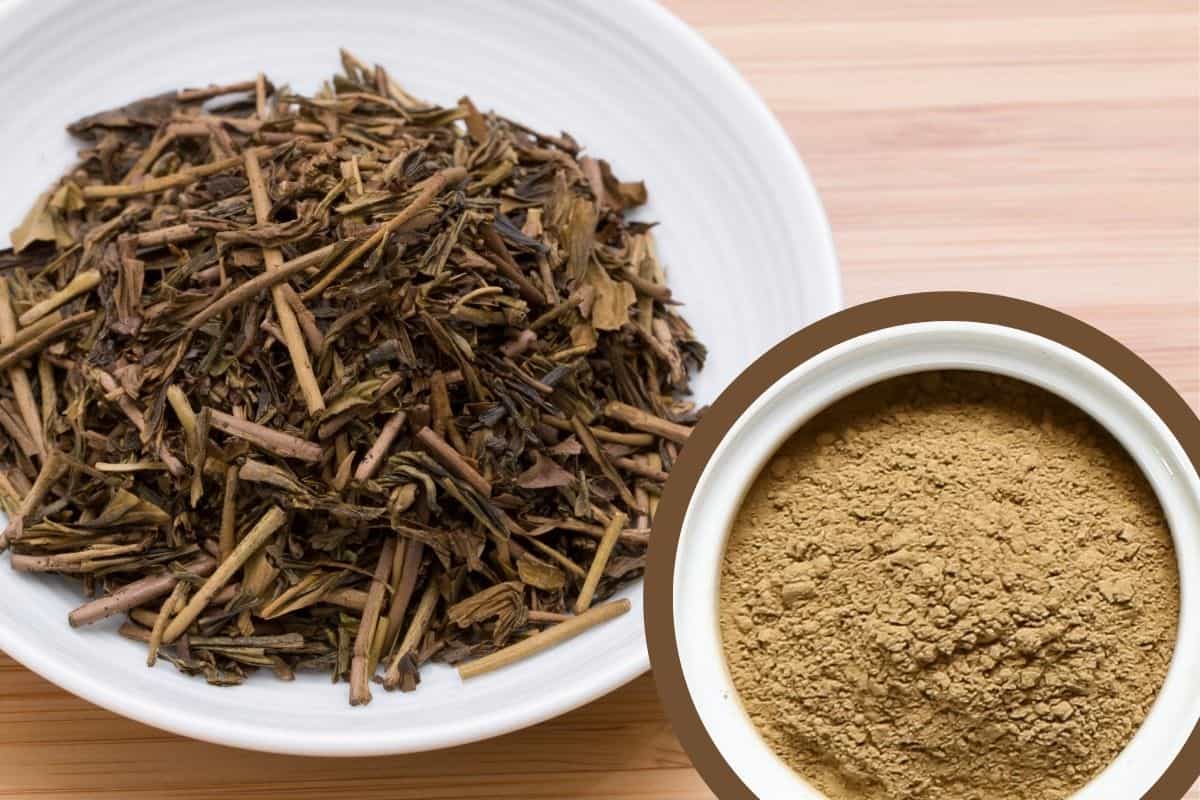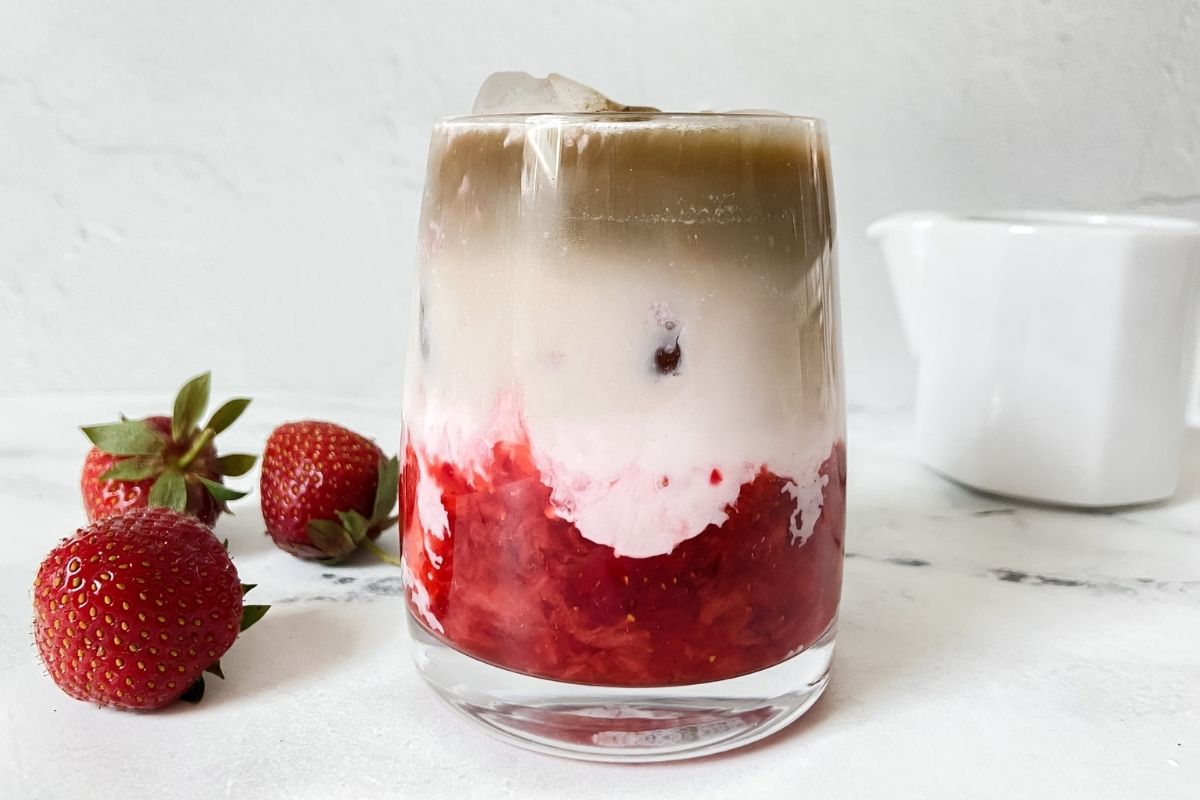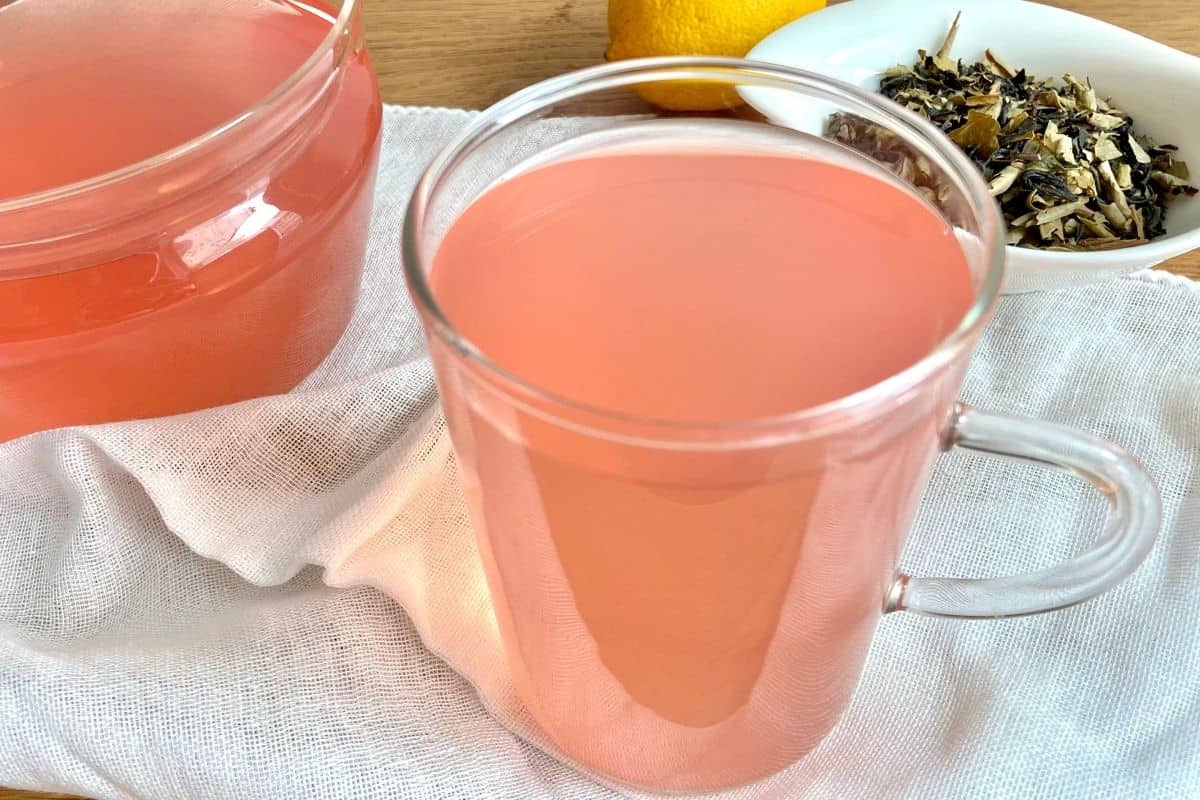How to Roast Green Tea (Homemade Hojicha)
Make your own delicious hojicha by simply roasting green tea at home (VIDEO included)

Matcha has been gaining lots of popularity worldwide, but many people still haven’t heard of hojicha.
It is time we change that! Hojicha is delicious, low caffeine, and a proven well-being booster thanks to its aroma.
In this post you’ll learn how to DIY roast hojicha; you’ll be amazed at the depth of taste you can achieve with a couple of tricks.
What’s hojicha and reasons to drink it

Hojicha is a Japanese tea made from roasting green tea.
This roasting process removes the bitterness of the tea and provides an earthy, nutty flavor with natural sweetness.
Hojicha comes also with a soothing smoky aroma.
You’ll love this roasted tea because…
- it has much less caffeine than traditional green tea, so you can drink it even if you are trying to reduce your caffeine intake
- hojicha maintains the antioxidants (catechin) of green tea
- it doesn’t have the acidity or grassy taste of some green teas, so it’s a good choice even for people who don’t like green tea so much
- it tastes very mild
- this tea can make you feel happier (due to its content in pyrazine, a compound that comes from the roasting and induces calmness*)
Of course, you can buy already done hojicha, but the cool thing is, you can also make your own by roasting regular green at home.
Traditionally, hojicha is roasted in a tea roaster called houroku, but you can also use a common pan.
In this article I’ll show how to roast green tea in a regular pan.

Some common questions about hojicha
Hojicha has a very low caffeine content: a cup of hojicha (8 ounces or 230ml) only has around 7.5 mg of caffein.
As a reference, a cup of green tea has between 20 and 50 mg of caffeine; a cup of black tea, about 45-mg; a cup of coffee, an average of 90 mg.
Hōjicha (焙じ茶 or ほうじ茶) is pronounced with a long “o” (hōjicha).
You can also spell it houjicha.
Hōji- comes from roasting in Japanese and -cha means tea.
That means, you don’t need to say “Hojicha tea”; the word hojicha already includes the tea part.
Hojicha is often made with the Japanese green tea sorts of bancha or lower grade sencha, but any kind of green tea will do it; there is no need for a special type.
It’s also okay to choose any old or expired green tea you have at home.
The best practice is to roast loose leaves but I’ve even tried with tea from teabags and in my opinion, you can get quite decent results too.
Bellow you’ll find some tricks to make hojicha from teabags.
Depending on how strong it’s roasted, hojicha can have a golden roast or darker reddish-brown color.
Some people prefer it lighter, while others like it dark and bolder.
Both are good and it only depends on about personal preference.
Making hojicha with tea from tea bags
My mom is a Japanese teacher and every time she shares this recipe with her students, the most frequent question we get is: does this work with green tea from a teabag?
Well, it does!
You may already know that tea experts prefer loose leaf tea over teabags: the larger the tea leaf, the more flavorful the tea, and tea from an average teabag is usually much smaller than loose tea.
In the picture below you can see an example of how different loose tea leaves and tea from a tea bag can be.
Both are from the exact same organic brand (to be specific, they are from the private lavel of DM, a popular chain store in the country I live, Germany):

But who doesn’t have some teabags at home?
I find them very convenient myself, but because I use them less frequently, they often expire before I can use them up…
That’s why I thought “wouldn’t it be great to repurpose these into hojicha?”.
And to my delight, it worked!
Roasting green tea from a bag is quite similar to roasting tea leaves, with only some minimal differences:
Tips
To make hojicha with tea bags
- BEFORE ROASTING
Cut the tea bags: don’t forget to get the tea out of the bags before roasting it - WHILE ROASTING
Pay extra attentionw: tea from tea bags is much smaller (even powder-ish) than tea leaves.
This difference in size means the particles from tea bags are much more likely to burn, so you need to be extra careful: they’ll be through in much less time.
Also, you may want to use a slightly lower heat level as when roasting whole leaves (I recommend medium heat). - TO STEEP IT
You’ll probably need to put the roasted hojicha in some sort of tea filter again.
These small tea particles love getting stuck everywhere!
So, to make it more convenient and less messy, I use paper or fine-mesh teabags instead of a tea strainer.

How do you brew hojicha?
Once you have your green tea roasted, brewing a cup o a teapot of hojicha is very easy.
No matter if you use homemade hojicha or purchased an already roasted one, hojicha just need to steep in hot water for around 30 seconds.
You can also cold steep hojicha.
Cold steeping hojicha at room temperature or in cold water (in the fridge) will take between 30 minutes and 2 hours.
Time needed: 1 minute
How to make hojicha
- Add tea into a cup or teapot
You need about a tablespoon (3 gr.) hojicha per cup

- Pour hot water
Unlike regular green tea (where you need to let the boiled-down liquid cool before pouring it into the tea), hojicha can be steeped with hotter water. Some people even use water that has just after boiled.
The high water temperature helps develop hojicha’s trademark rich flavour.
- Steep
Let steep for around 30 seconds.

- Remove the tea
Move the water carefully in circles before removing the tea.
This allows the tea to get more aroma and flavor.
You can re-use the tea for at least another steep.
You can also see how to roast and prepare hojicha (with hot water or cold brewed) in this VIDEO:
More About Tea
What goes well with hojicha?

Hojicha is very versatile: it pairs well with sweets, but also complements savory flavors.
It tastes good both as hot tea, as iced tea (also cold brewed) and you can drink this flavorful drink plain or adding some milk to create a delicious hojicha latte.
There are also many recipes that use this delicious tea in their cooking process such as hojicha chiffon cake, hojicha ice cream, hojicha cookies, hojicha cupcakes… even ramen noodles with hojicha!

And now to the fun part: let’s get roasting!
Roasting your own hojicha it’s highly rewarding because not only the resulting tea is very fragrant (even if you are repurposing stale tea leaves), but your kitchen will also smell awesome.
Basically, roasting green tea is as simple as roasting them in a clean and dry pan with high heat: toss them continuously so they get an even roast and in 2-5 minutes you will have delicious hojicha tea.
However…
… there are a couple of tricks that will make your hojicha even more aromatic.
This way of roasting tea is known as the Gatten-method in Japan because it was featured in the show “Tameshite gatten”, a very popular lifestyle programm in Japanese National television (NHK).
This is how to roast hojicha using the ‘Gatten-method’:

How to roast green tea (hojicha)
Equipment
- Frying pan with lid
Ingredients
- 3 tbsp green tea (15 gr. / half oz.)
Instructions
- Make sure your pan is clean and dry; otherwise you could transfer fat or odors to your hojicha.
- Heat the empty frying pan for a couple of minutes, until it's hot (you'll get it quicker with the lid on).

- Once the pan is hot, turn off the heat and place the pan (briefly, for about 4-5 seconds) on a damp towel. It will make a “shhhh” sound. The shhh-sound shows you that the pan is hot enough. Also, putting the pan on a damp towel make the heat even.

- Take the pan away from the towel. Extend the tea on the pan and leave it rest, with the lid on, for 2 and half minutes.

- After that time, remove the lid and turn the heat on (medium-high or high). Roast moving the tea carefully.

- You’ll soon get the signature roasted smell from hojicha. After 1-2 minutes, the leaves will begin to generate some smoke. The smoke is the signal to turn the heat off. But if your tea isn’t brownish yet, you can roast a minute longer (just make sure you don’t overdo it: the tea shouldn’t get black or smell burned)
- After turning the heat off, continue to move the leaves for a couple of minutes, using the residual heat until the smoke stops.You can use your hojicha leaves immediately or store them like any other tea (in a closed recipient on cool and dry environment or freezed).
Video
Notes
- Hojicha has MANY ROASTING LEVELS: some are darker than others, but there is no relation between the roasting intensity and its quality.
This means you can roast your tea lightly or stronger, depending on how you prefer it (if you are new to roasting, I recommend to begin with lighter a roasting to avoid burning the tea). - You can use any kind green tea leaves (but not matcha powder).
- Once you have your own roasted Hōjicha, you might like trying a hōjicha latte
Nutrition
To sum it up: is it worth roasting your own hojicha?
In my opinion, the answer is a huge “YES!”.
Of course, there are amazing hojichas to buy out there (I myself buy some), but roasting tea at home also has lots of perks:
- it can help you recycle tea that has got old or that you don’t like so much as is
- your kitchen will smell GREAT
- also, if you haven’t tried hojicha before, you can roast a small amount first to see if you would like to purchase some
And if these reasons weren’t enough, it is also very easy to make.
I hope you enjoy drinking this homemade hojicha as well as the relaxing, roasted aroma that spread in your kitchen when making it! (which is one of my favorite parts about roasting hōjicha).
*Sources:
https://pubmed.ncbi.nlm.nih.gov/6319701/
https://www.mdpi.com/2076-3417/11/17/8217/htm
https://pubmed.ncbi.nlm.nih.gov/1438023/













I love matcha but I didn’t know so much about Houjicha till quite recently.
So I loved this recipe!
Thank you so much for explaining it so well. I liked that it was very taste but very mild, no bitterness at all.
That’s so sweet of you, thank you for your comment! I am very happy you liked this Hojicha latte. Hojicha always tastes good, but often I see recipes where they “cook” the Hojicha a little too long… In my opinion, it does the tea no favor.
So cool! Roasting the tea made it a pleasure to drink my old tea. Thank you for explaining how do it with teabags.
Thank you Cindy. I am so happy you could use that “old” teabag to make Hojicha. I find it almost magical how even average (or cheap) green tea transforms to something much tastier in a couple of minutes.
This video is so helpful, thanks!
I am so happy it helped. Thank you for your kind comment!